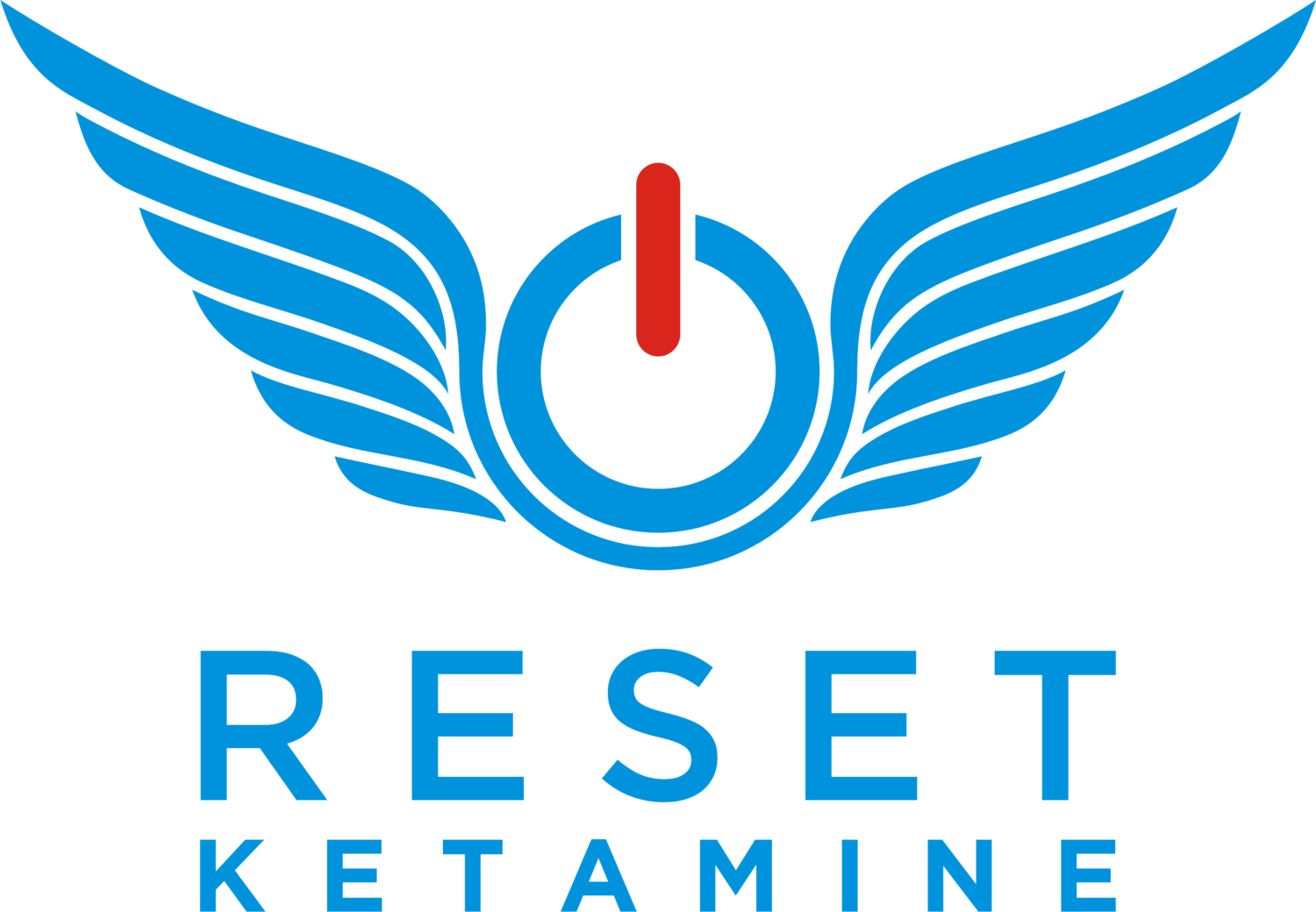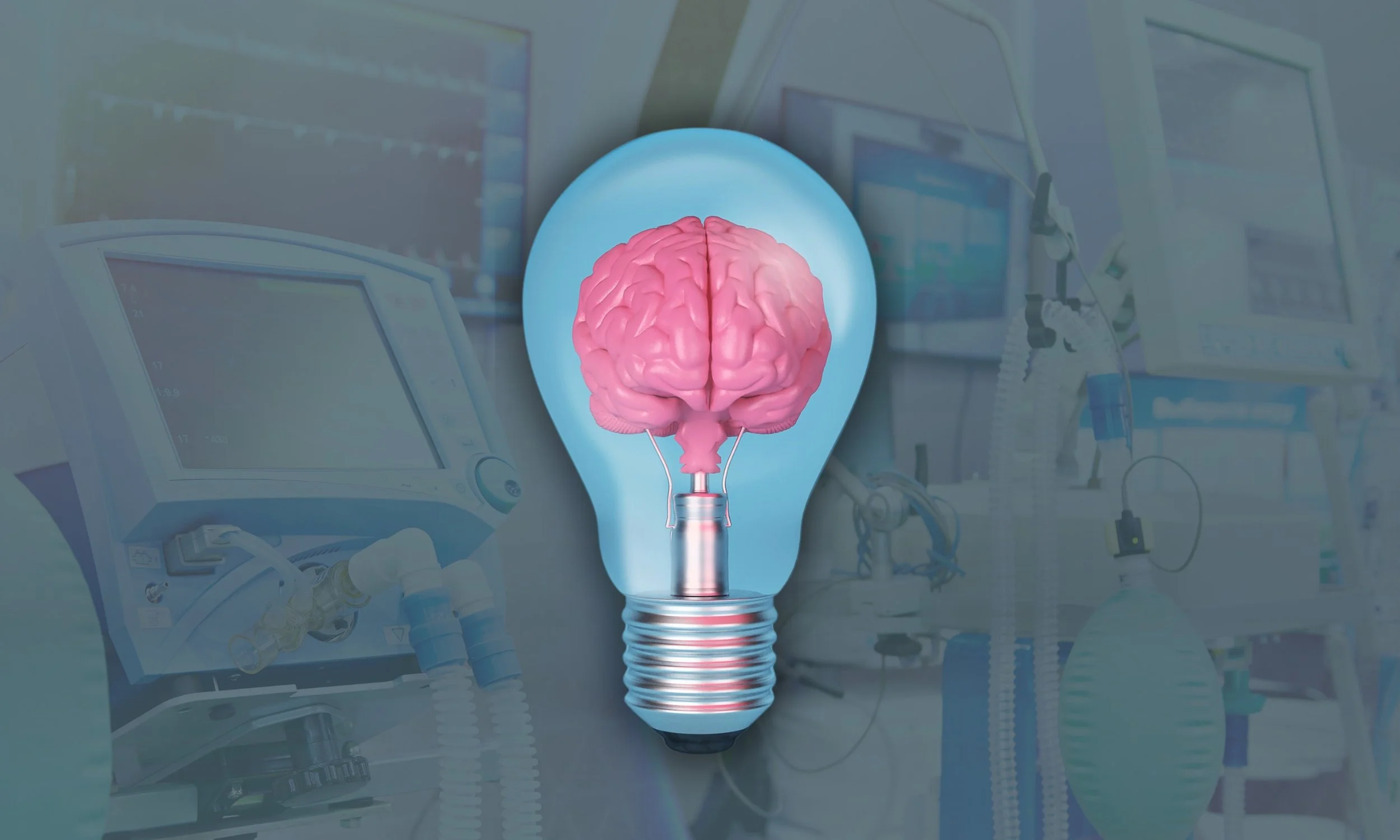Synopsis: Curious about racemic ketamine and how it works? This blog breaks down the history, chemistry, and therapeutic benefits of racemic ketamine, comparing it to esketamine and exploring the biological, psychological, and spiritual mechanisms behind its transformative effects.
What Is Racemic Ketamine?
You might be wondering what racemic ketamine is. Maybe you've come across this term as you’ve been considering ketamine therapy. If that's the case, you are in the right place. In this blog, we’re going to break down exactly what racemic ketamine is and why it's important to know and understand this term within the context of this transformational therapy.
Ketamine was developed in the 1960s as a safer alternative to PCP and became widely used as an anesthetic during the Vietnam War. Since the 1990s, it has been found to effectively treat chronic pain and mood disorders like depression.
A Brief History of Ketamine
Ketamine’s story began in 1956 with the synthesis of phencyclidine, also known as PCP. Found to be a remarkable anesthetic, the side effects—including emergence delirium lasting for hours and, in some cases, loss of sensation in limbs—led researchers to return to the drawing board.
Hoping to find an equally effective alternative with fewer side effects, Dr. Calvin Lee Stevens of Wayne State University synthesized a sequence of phencyclidine derivatives. One compound, in particular, was found to be a successful short-acting anesthetic: CI-581, which we now call ketamine.
After Food and Drug Administration approval in 1970, ketamine was used on injured soldiers during the Vietnam War as a safe battlefield anesthetic. Since 1994, many clinical studies have found that ketamine is not only useful in relieving short-term pain but can also effectively treat certain chronic pain conditions and mood disorders such as depression.
Ketamine has two forms, R-ketamine and S-ketamine. Racemic ketamine, which includes both, is more potent and effective for conditions like depression, anxiety, and chronic pain.
A Quick Chemistry Lesson on Ketamine
Now that you know a little more about where ketamine came from, let's dive into what racemic ketamine is. To understand this, let's explore a quick chemistry lesson. Ketamine comes in two forms called stereoisomers. These are mirror images of each other—meaning the chemical structures have the same atoms and molecular order but are oriented differently in space.
Think of it like your left hand and your right hand. In chemistry, we call these the R and S molecules. So, there's R-ketamine and S-ketamine, which are slightly different in shape but otherwise similar.
Ketamine is an N-methyl-D-aspartate (NMDA) receptor antagonist, which means it binds to this receptor and blocks the release of glutamate, a neurotransmitter. Both the R and S forms bind to the NMDA receptor, but with different affinities—or varying tendencies to react—which come into play later in this blog.
The Benefits of Receiving Racemic Ketamine Therapy vs. Esketamine
Now, you may have also heard of another form of ketamine that has been featured prominently in the media: S-ketamine (also written as “esketamine”). Janssen Pharmaceuticals developed Spravato, which contains only S-ketamine. While Spravato is FDA-approved as a nasal spray for treating depression symptoms, racemic ketamine is typically used off-label and administered intravenously or intramuscularly in clinical settings.
There is a growing body of research showing that IV racemic ketamine is more potent and longer-lasting than using just one isomer by itself. According to Jelen et al., their study found that although R-ketamine is a less potent NMDA receptor antagonist compared to S-ketamine, it has a stronger and more sustained antidepressant effect.
So why is racemic ketamine important? Having both the R and S molecules means that patients receive the full benefits of ketamine, especially for conditions like depression, anxiety, PTSD, and chronic pain. It’s also worth noting that Spravato is approved only to treat depression. There is a growing body of research suggesting that using both molecules can lead to a more comprehensive therapeutic effect. However, further research is needed to give us definitive answers.
Spravato is a nasal spray with a two-hour observation period, while IV racemic ketamine therapy involves an IV infusion that takes about 40 minutes, with continuous vital sign monitoring and varying recovery times.
Is There a Different Experience Between Esketamine and IV Racemic Ketamine Therapy?
Because of the different routes of administration, the patient experience with these treatments differs significantly. Both require you to come to a medical office, but from there, the experiences diverge.
For Spravato, the medication is administered via nasal spray, and you’ll then be observed for up to two hours for any adverse side effects. Your vital signs will be assessed before treatment and possibly during and afterward.
IV racemic ketamine therapy—often simply referred to as “ketamine therapy”—is different. You'll have your vital signs checked before the treatment (at our clinic, we provide continuous vital sign monitoring). An IV will be placed in your arm, and the dose will be calculated based on your body weight, typically starting at 0.5 milligrams per kilogram.
The infusion process takes around 40 minutes. Clinics vary in how they monitor you; some clinics may have a person present in the room, while others provide a call button for assistance. Depending on the dose and other factors, recovery times can vary.
Ketamine can induce altered states of consciousness. These states can vary from feelings of love and euphoria to deep, transformative visions or a sense of unity with the universe.
What Can I Experience During My Ketamine Treatment?
Ketamine is known as a dissociative anesthetic and an atypical psychedelic medication. In other words, this treatment can lead to altered states of consciousness. Dr. Eli Kolp categorized ketamine-induced non-ordinary states of consciousness into four types:
Empathogenic Experience
Awareness of body
Comfort and relaxation
Reduced ego defenses
Empathy, compassion, and warmth
Love, peace, and euphoria
Dream-like mind with non-specific, colorful visual effects
Out-of-Body Experience (OBE)
Complete separation from the body
Significantly diminished ego defenses
Visits to mythological realms of consciousness
Encounters with non-terrestrial beings
Emotionally intense visions (e.g., deceased relatives, spirits)
Vivid dreams of past and future incarnations
Re-experiencing the birth process
Near-Death Experience (NDE)
Departure from the body
Complete ego dissolution/loss of identity
Experienced physical and psychological death
Experience of being a single point of consciousness
Reliving one’s life and understanding how actions affected others
Ego-Dissolving Transcendental Experience (EDT)
Ecstatic state of dissolution of boundaries between self and external reality
Complete dissolution of the body and self
Transcending normal mass/time/space continuum
Unity with nature/the universe
Ketamine works biologically, psychologically, functionally, and spiritually to promote healing for conditions like depression, anxiety, PTSD, and chronic pain.
There’s More to Ketamine Than Chemistry
While understanding the dual forms of ketamine (R and S isomers) and their complementary effects is important, ketamine’s therapeutic power goes far beyond chemistry. Its effects on emotional and physical pain, and its potential for inducing profound shifts in consciousness, cannot be fully captured by chemistry alone. Ketamine’s benefits encompass multiple mechanisms that work together to promote healing.
At our clinic, we recognize four primary ways ketamine works:
Biological Mechanism: Ketamine acts as an NMDA receptor antagonist, which blocks the stimulation of this receptor. This process increases brain-derived neurotrophic factor (BDNF), promoting neurogenesis (the growth of new neurons) and neuroplasticity (the brain’s ability to reorganize itself). These changes help "rewire" the brain, creating healthier pathways and breaking cycles of negative thought patterns.
Psychological Mechanism: During ketamine treatment, patients access their subconscious minds, bringing suppressed emotions, memories, and experiences to the forefront. This allows for therapeutic exploration, emotional release, and a deeper understanding of unresolved issues.
Functional Mechanism: Ketamine reduces activity in the Default Mode Network (DMN), a part of the brain that governs repetitive, self-referential thought patterns and is linked to the ego. By disrupting the DMN, ketamine facilitates a "mental reset," encouraging new neural pathways and reducing rumination.
Spiritual and Transcendental Mechanism: As many patients report, ketamine therapy can induce profound, deeply spiritual states. These experiences can foster shifts in perspective, self-compassion, and interconnectedness, contributing to lasting emotional healing. Just as a traumatic event can harm, a deeply meaningful experience can heal.
Each of these mechanisms works synergistically, addressing the biological, psychological, and spiritual aspects of healing. The unique combination of ketamine’s effects enables it to treat conditions that are resistant to traditional therapies, offering hope to those struggling with depression, anxiety, PTSD, and chronic pain.
Explore more about the four ways ketamine therapy works in our blog post: The 4 Mechanisms of How Ketamine Works.
Racemic Ketamine and Understanding Ketamine Therapy
Now that you’ve read this blog, you should have a clearer understanding of what racemic ketamine is and how it relates to ketamine therapy. You also now understand how Spravato compares to racemic ketamine. Armed with this information, we hope you feel better equipped to explore ketamine therapy and find a clinic (or visit us) where you can begin your journey.
References:
If you enjoyed this blog post, check these out too:
What Will Your Ketamine Experience Be Like?
Often Dr. Ko gets questions about what a ketamine infusion is like. People want to know what to expect! In this blog, he shares one way he answers this question, using the analogy of going to a restaurant.
How Does Ketamine Therapy Work?
Find the answer to how ketamine therapy works as this blog goes over four key mechanisms: biological, psychological, functional, and spiritual—revealing how ketamine can influence the mind and body in transformative ways.
Ketamine -- is it a horse tranquilizer, club drug, or life transforming medical therapy? Actually, all of the above! This blog covers all you need to know about ketamine's color and eventual history.










